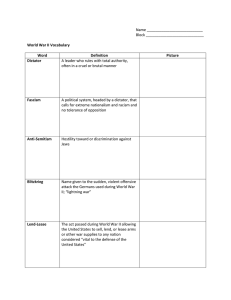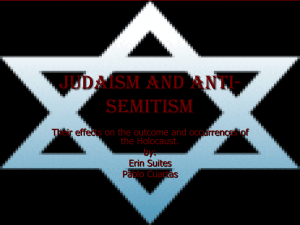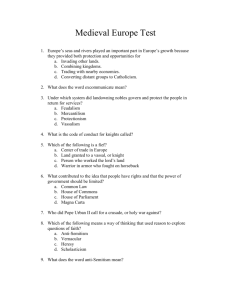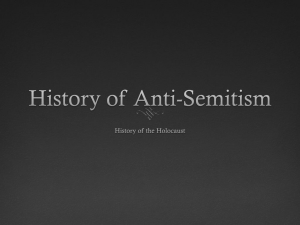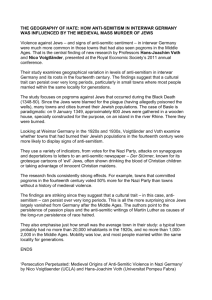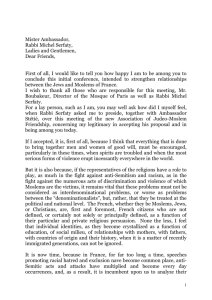A. Anti-Semitism: From Wikipedia, the free encyclopedia.
advertisement
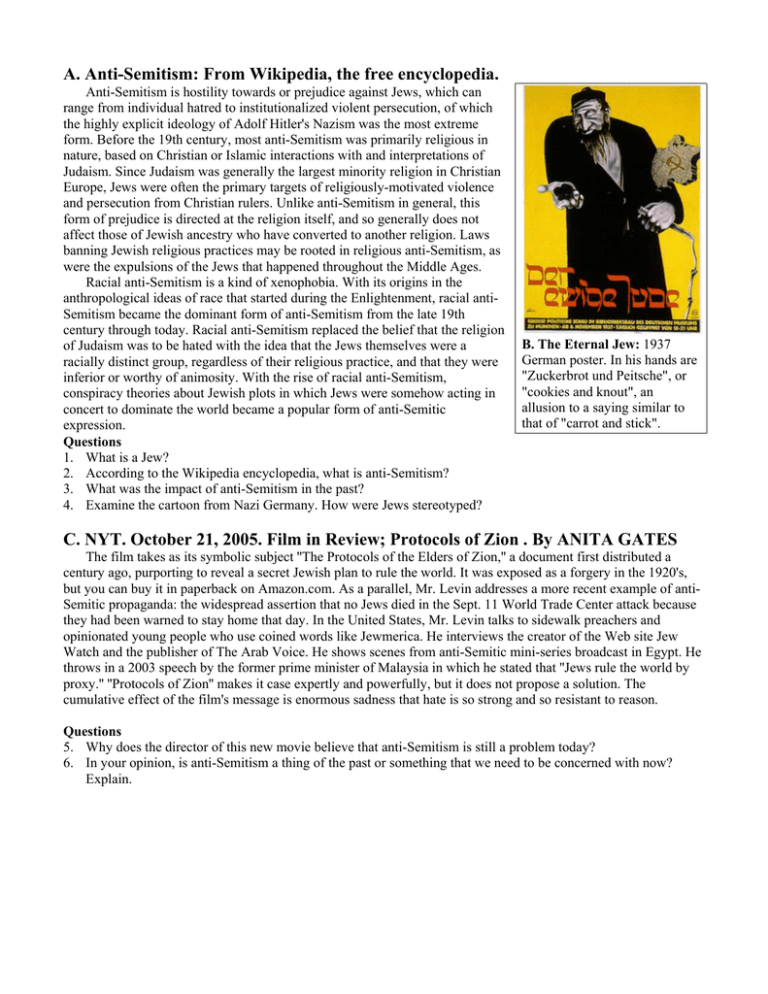
A. Anti-Semitism: From Wikipedia, the free encyclopedia. Anti-Semitism is hostility towards or prejudice against Jews, which can range from individual hatred to institutionalized violent persecution, of which the highly explicit ideology of Adolf Hitler's Nazism was the most extreme form. Before the 19th century, most anti-Semitism was primarily religious in nature, based on Christian or Islamic interactions with and interpretations of Judaism. Since Judaism was generally the largest minority religion in Christian Europe, Jews were often the primary targets of religiously-motivated violence and persecution from Christian rulers. Unlike anti-Semitism in general, this form of prejudice is directed at the religion itself, and so generally does not affect those of Jewish ancestry who have converted to another religion. Laws banning Jewish religious practices may be rooted in religious anti-Semitism, as were the expulsions of the Jews that happened throughout the Middle Ages. Racial anti-Semitism is a kind of xenophobia. With its origins in the anthropological ideas of race that started during the Enlightenment, racial antiSemitism became the dominant form of anti-Semitism from the late 19th century through today. Racial anti-Semitism replaced the belief that the religion of Judaism was to be hated with the idea that the Jews themselves were a racially distinct group, regardless of their religious practice, and that they were inferior or worthy of animosity. With the rise of racial anti-Semitism, conspiracy theories about Jewish plots in which Jews were somehow acting in concert to dominate the world became a popular form of anti-Semitic expression. Questions 1. What is a Jew? 2. According to the Wikipedia encyclopedia, what is anti-Semitism? 3. What was the impact of anti-Semitism in the past? 4. Examine the cartoon from Nazi Germany. How were Jews stereotyped? B. The Eternal Jew: 1937 German poster. In his hands are "Zuckerbrot und Peitsche", or "cookies and knout", an allusion to a saying similar to that of "carrot and stick". C. NYT. October 21, 2005. Film in Review; Protocols of Zion . By ANITA GATES The film takes as its symbolic subject ''The Protocols of the Elders of Zion,'' a document first distributed a century ago, purporting to reveal a secret Jewish plan to rule the world. It was exposed as a forgery in the 1920's, but you can buy it in paperback on Amazon.com. As a parallel, Mr. Levin addresses a more recent example of antiSemitic propaganda: the widespread assertion that no Jews died in the Sept. 11 World Trade Center attack because they had been warned to stay home that day. In the United States, Mr. Levin talks to sidewalk preachers and opinionated young people who use coined words like Jewmerica. He interviews the creator of the Web site Jew Watch and the publisher of The Arab Voice. He shows scenes from anti-Semitic mini-series broadcast in Egypt. He throws in a 2003 speech by the former prime minister of Malaysia in which he stated that ''Jews rule the world by proxy.'' ''Protocols of Zion'' makes it case expertly and powerfully, but it does not propose a solution. The cumulative effect of the film's message is enormous sadness that hate is so strong and so resistant to reason. Questions 5. Why does the director of this new movie believe that anti-Semitism is still a problem today? 6. In your opinion, is anti-Semitism a thing of the past or something that we need to be concerned with now? Explain.
